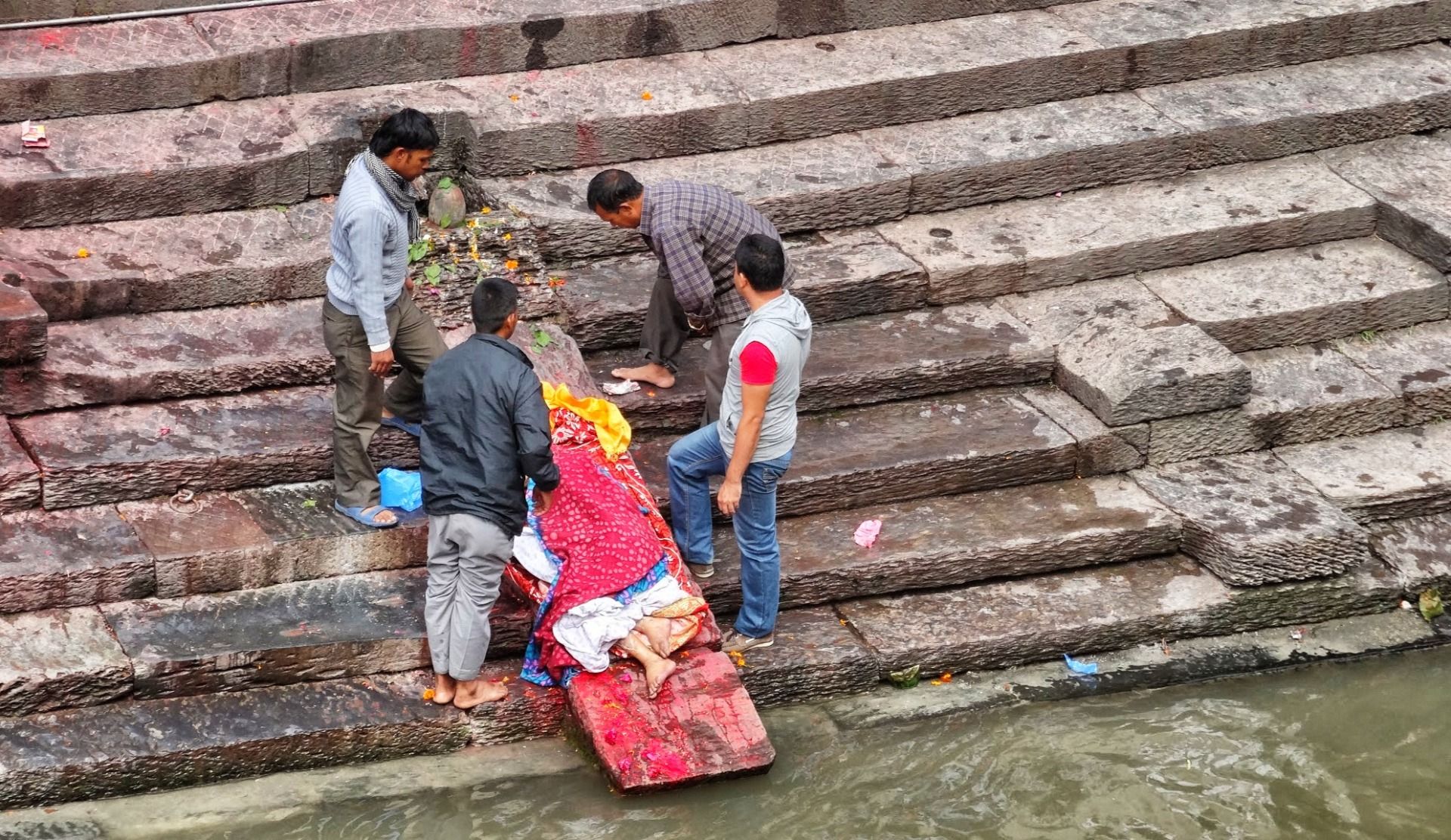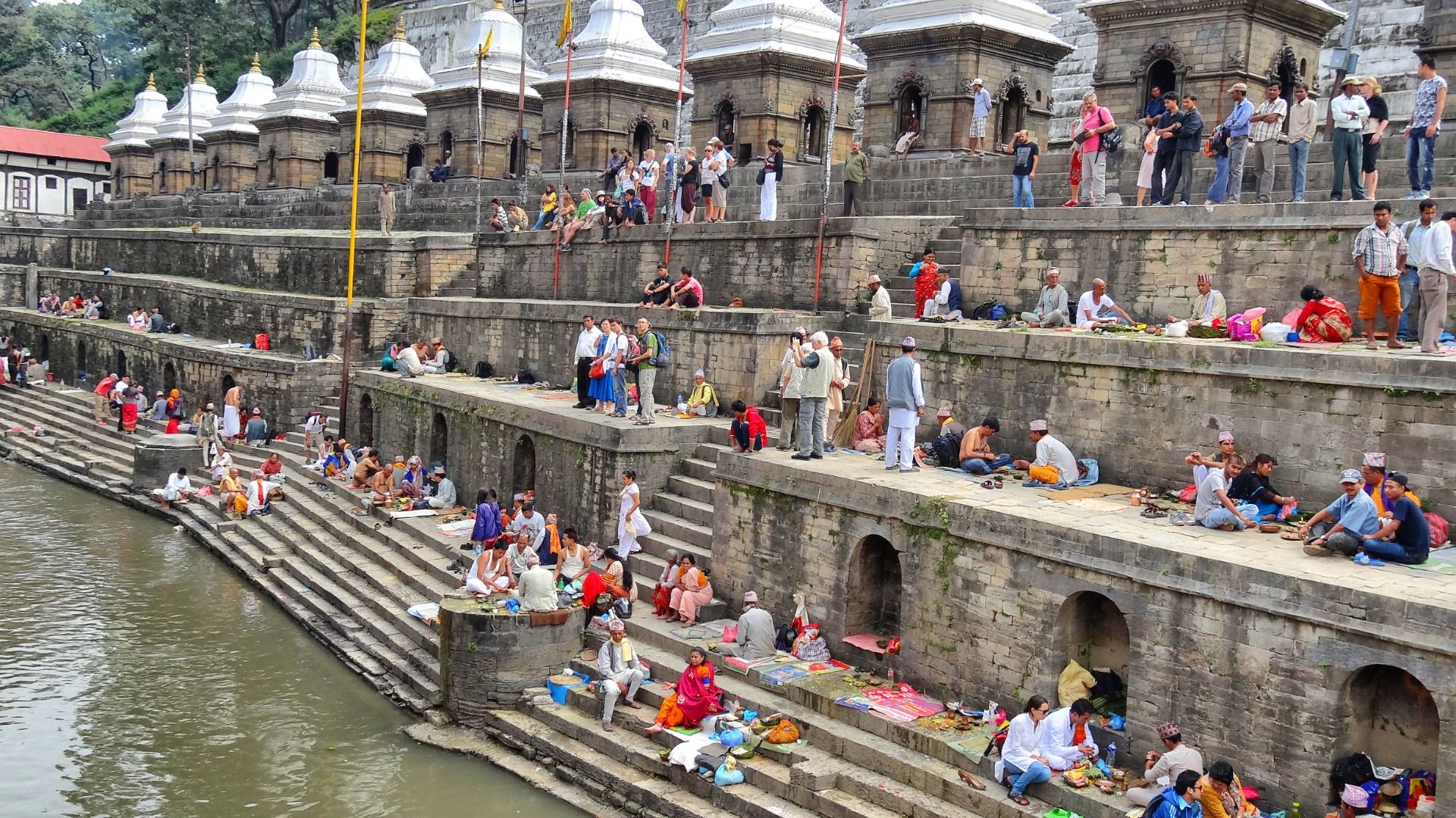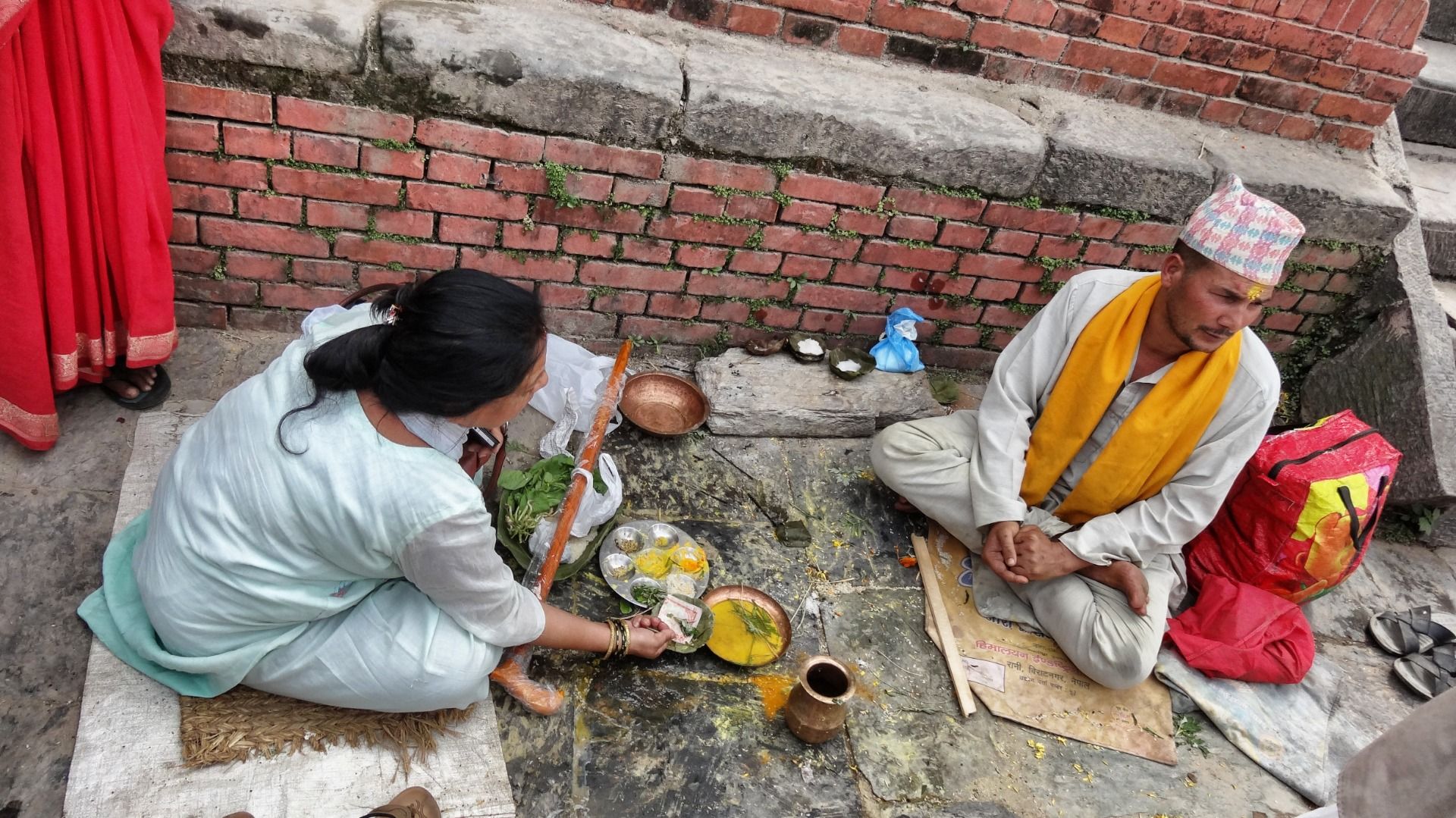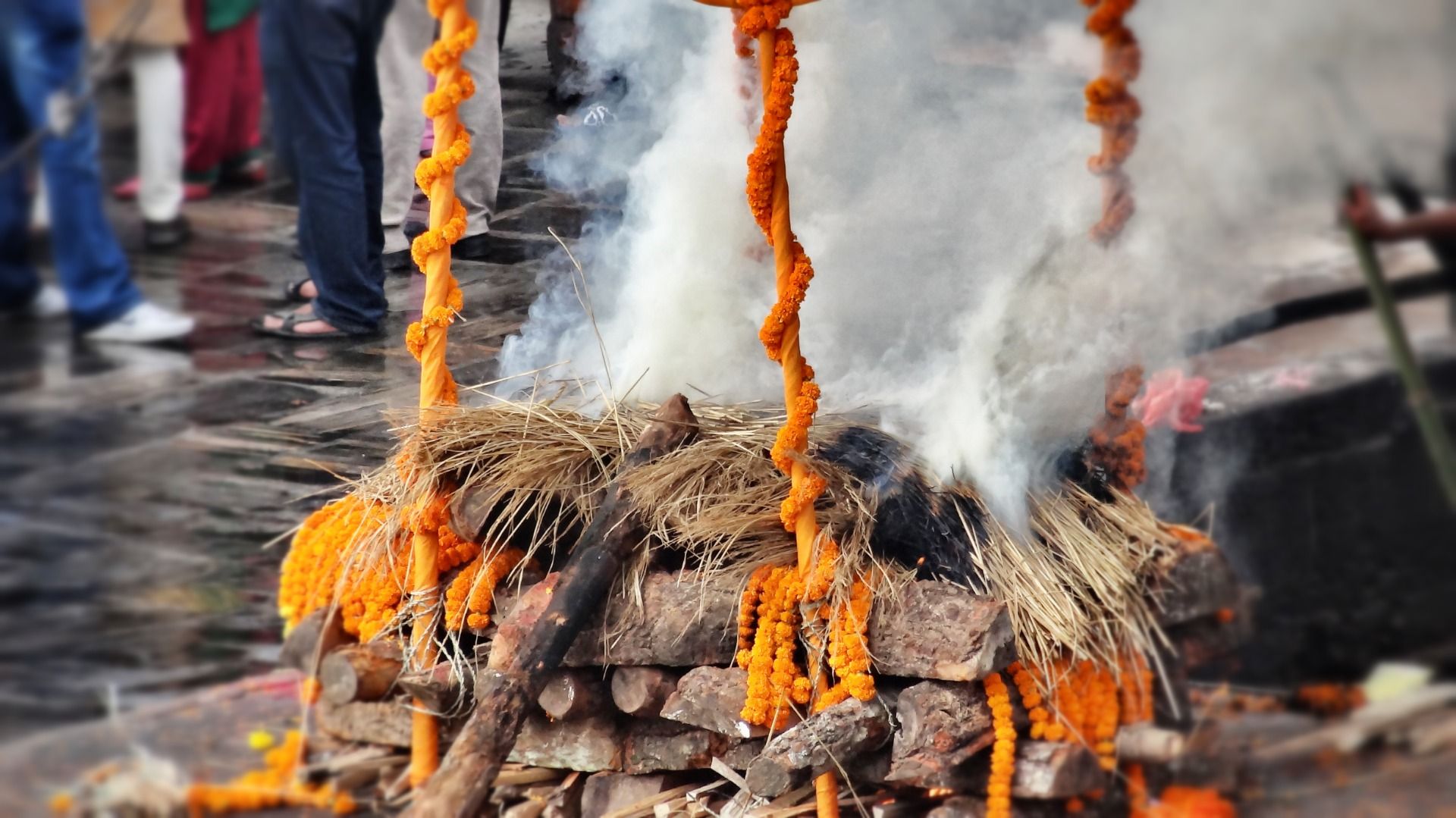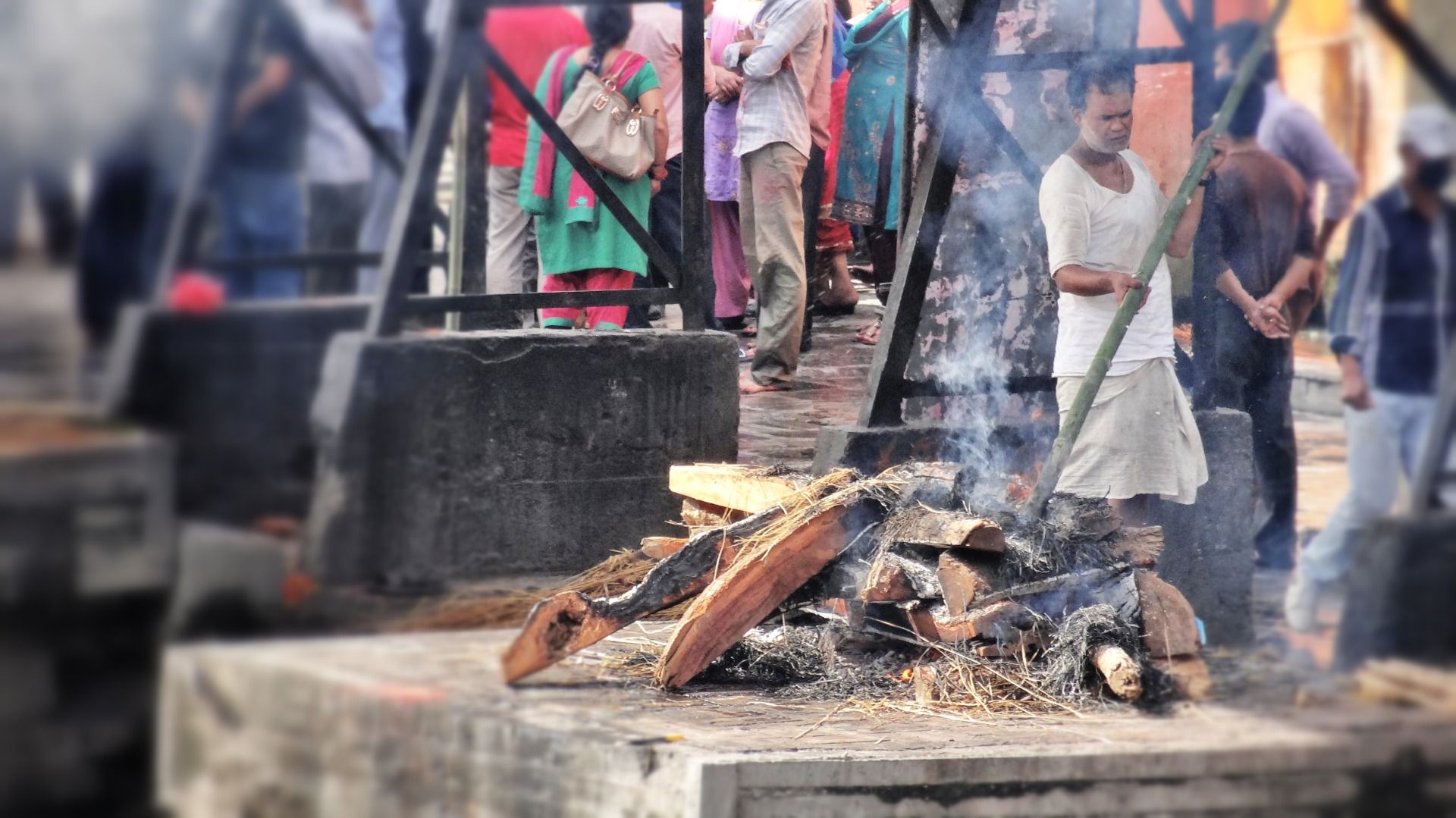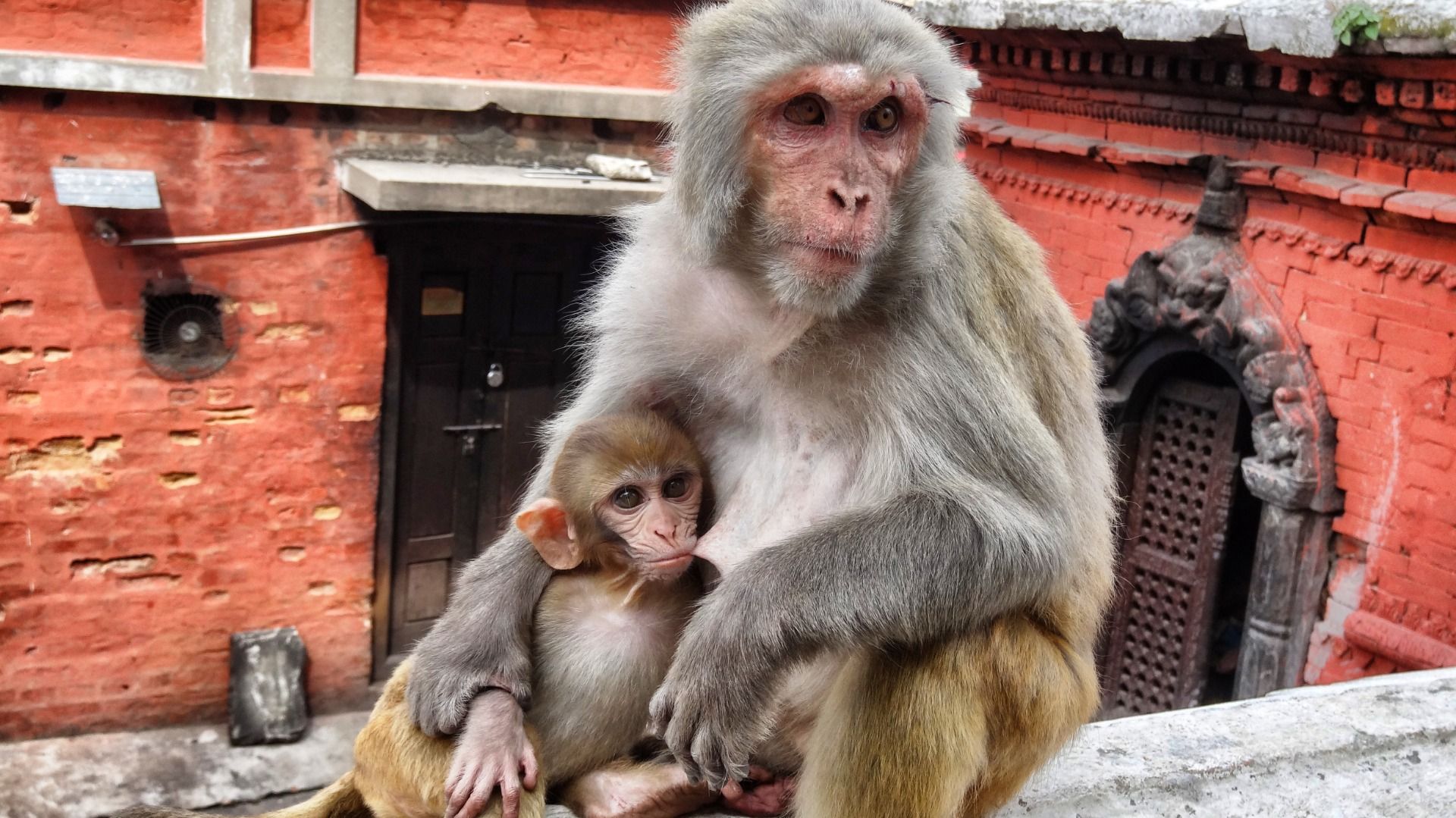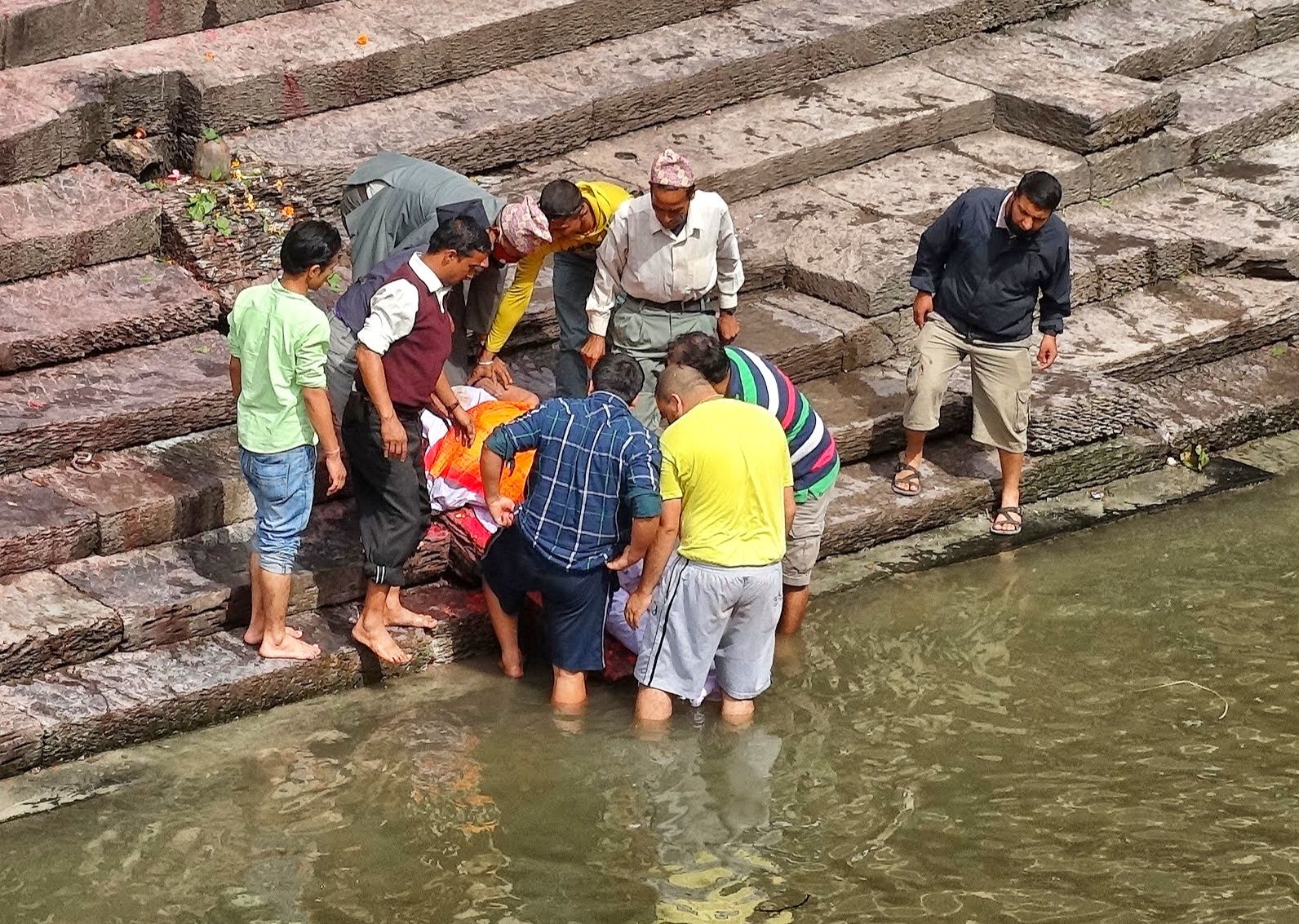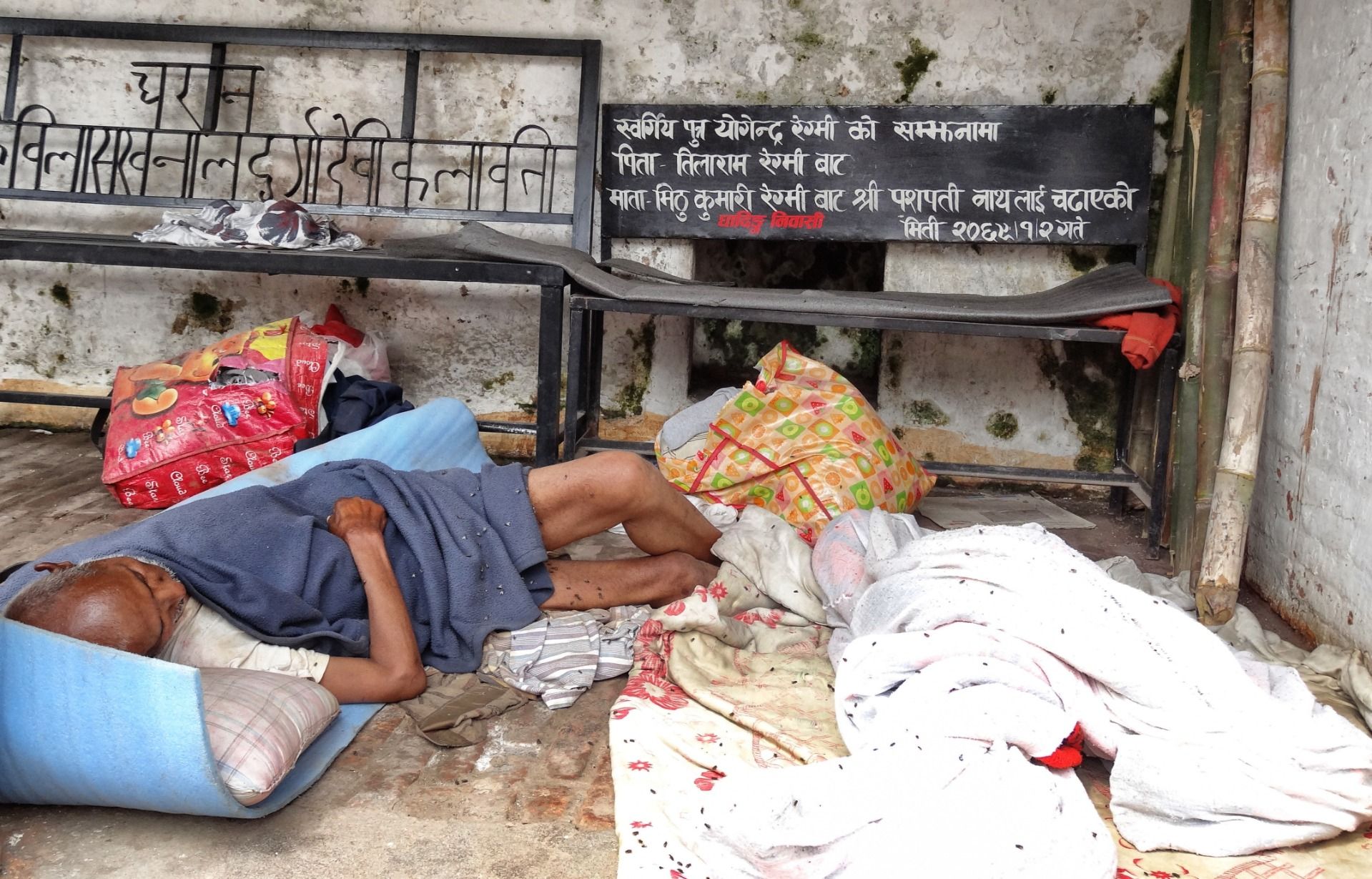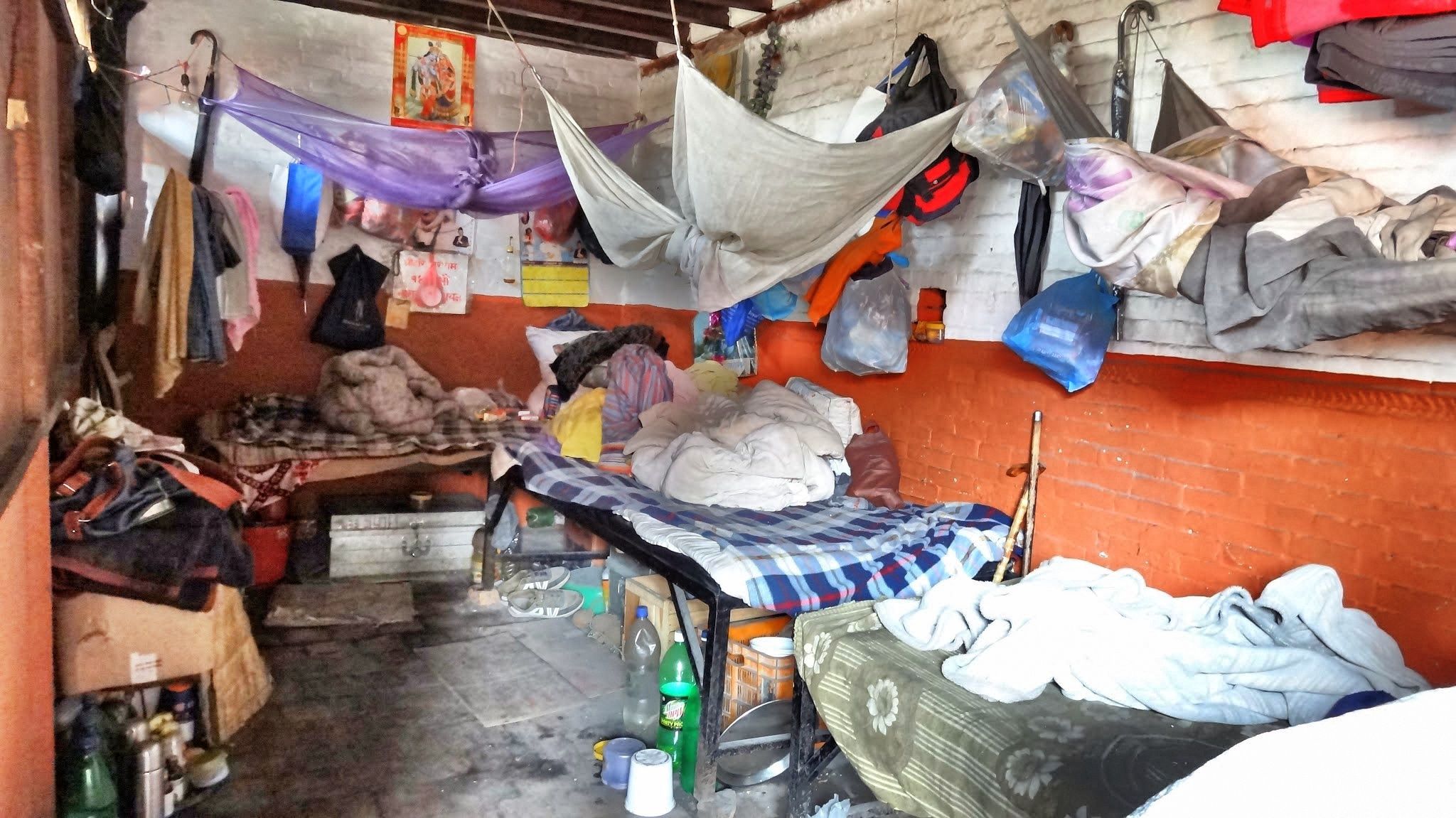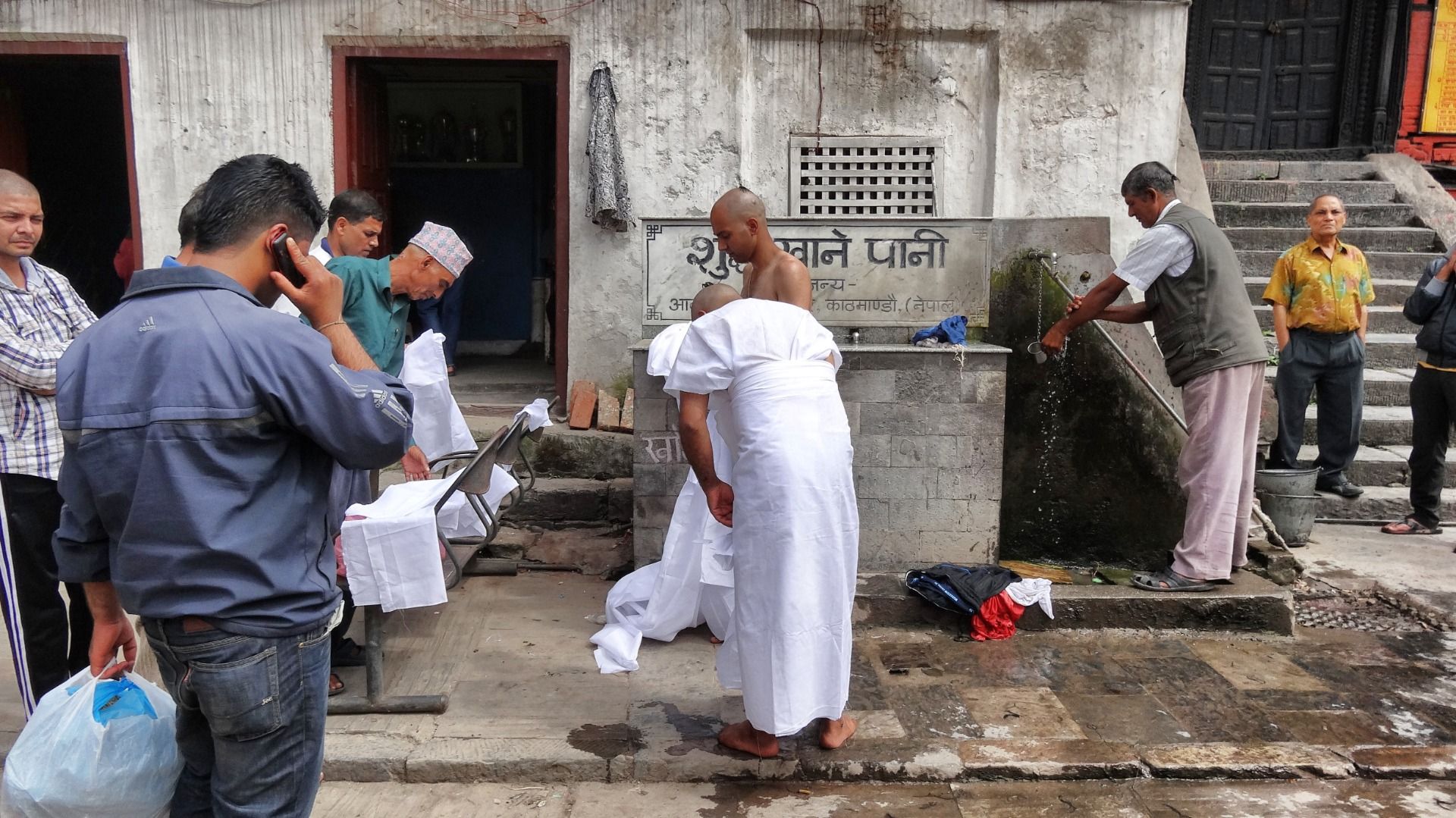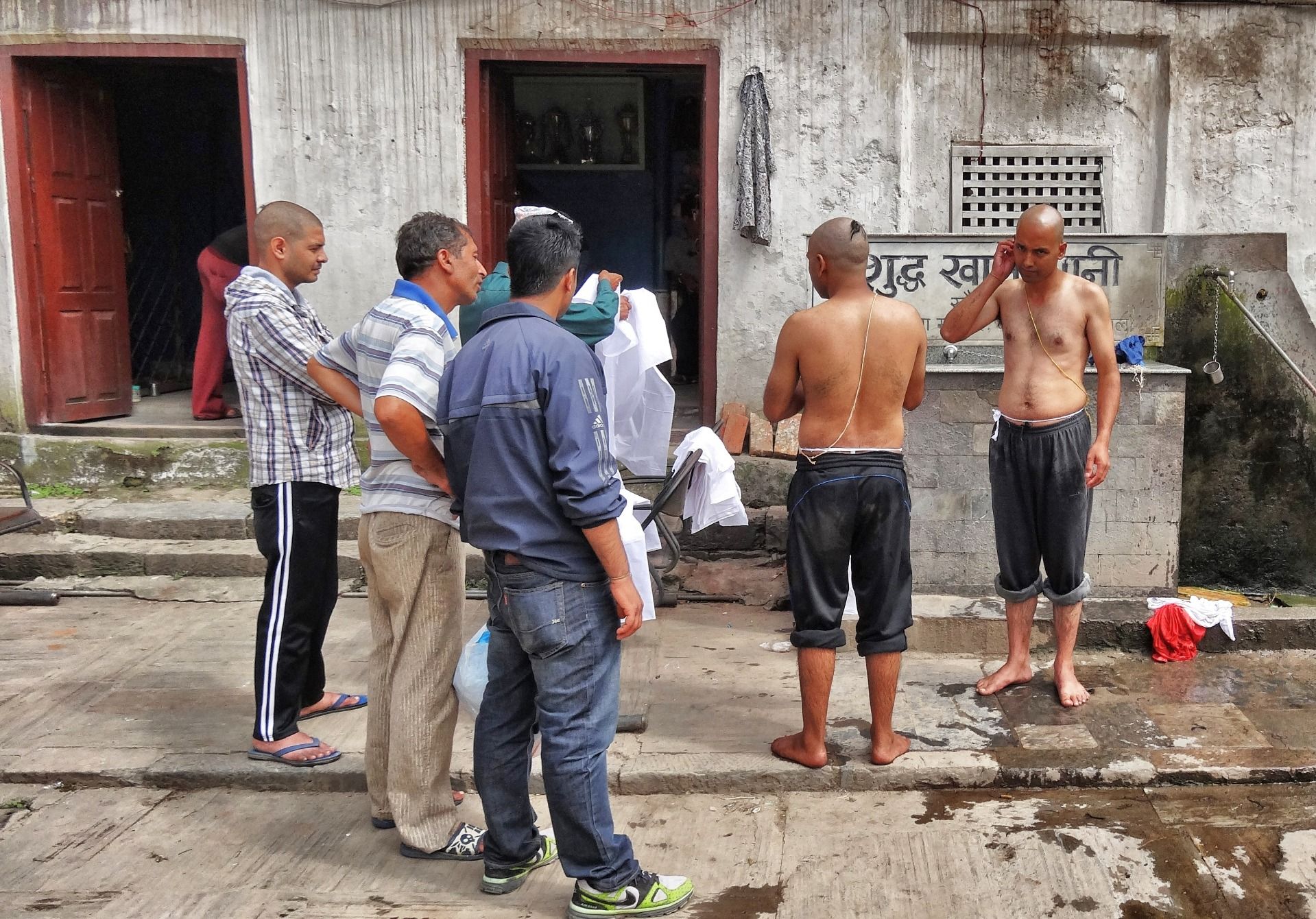The two men wash themselves thoroughly, they wrap themselves in white towels and then they bow several times. Family members bustle around them, raining flowers and banknotes. Then the whole company goes down to the river bank, where a strange task that is almost bizarre for Westerners awaits: Supported by professional combustion experts, a dear family member will be burned in front of everyone, amazed not only by walkers and temple visitors, but also by Tourists holding handkerchiefs in front of their mouths so as not to breathe in what was just living people.
We are in Pashupatinath, a small town a few kilometers east of the Nepalese capital Kathmandu. Here is a temple dedicated to Shiva, one of the highest Hindu gods. And here flows a river called Bagmati, which is at least as sacred to all Nepalese as the Indians to their Ganges. Anyone who sires in Nepal and can somehow afford it wants to be burned here and only here, because that is a sure guarantee for a next life in the lap of the gods.
This tradition transforms the scenery on the step-shaped bank into a picture from hell. Right next to a two-story pagoda covered with gold-plated copper, in which stands a particularly important statue of Shiva, which only Hindus can see, whirls a life that is meant for the dead. Snack vendors offer food and drinks, wood vendors the material to burn the dead, others have flowers on offer or food for the pigeon's armada, which counts after tens of thousands. Monkeys and brightly painted holy men are also waiting for a mild gift; they compete with vendors of counterfeit precious watches, sunscreen and towels that you can keep to your mouth when you approach the cremation sites that lie in thick smoke.
It is the river of the dead that waits here. Stone platforms, called ghats, protrude into the water at several points. They are used for the ceremonies for which the name Pashupatinath stands, like no other in Nepal: for the cremation of the dead.
It takes place as a solemn act, in the merciless rhythm of series production. First, a mountain of firewood is piled up on a ghat, then the mourning community approaches with the dead and a Brahmin who leads the ceremony. The group lines up by the water, prayers are said and finally the flames are lit, initially hidden by orange cloths that cover the body. There is a greasy, thick stench in the air that does not deter spectators. They are everywhere, on the balconies behind the groups and on the opposite side of the river. Locals picnic there as they watch as the next body is placed on yellow Tagetes chains, straw is added, and the dead man is finally put down. His body is becoming dust that goes into your lungs.
As in other predominantly Hindu areas such as India or Bali, it is a tradition in Nepal to publicly burn the deceased. Before that, the dead man is cleaned, anointed and wrapped in towels. The relatives previously immersed them in holy water. The physically and mentally cleansed person is placed with his head facing south. The god of death Yama is believed to be there. Before the wood ignites, the dead man's feet must be cleaned with holy water. Since the Bagmati River flows in the Ganges, it is considered suitable for this purpose by the Hindus in Nepal - if you look at the water, you automatically have doubts, because it is brown and dirty, a broth that nobody would want to get close to voluntarily.
A mistake. Young people from the area find their source of income directly at the foot of the incineration platforms. As soon as a dead person is completely burned, his remains are pushed into the water with a broom. There, the children and adolescents are already eagerly waiting for their next chance to fish gold teeth or silver rings that were not taken from the dead before the cremation. To do this, the hunters of the lost treasures repeatedly dive into the floods of ashes, sewage and remains of bones, so that those who watch them need strong nerves.
My sequel from Kathmandu
If you like my work please follow me on Travelfeed.io
Ready to Blog & Earn?
With TravelFeed, easily start your own travel blog and earn as you go. It's the smart platform for travelers who want to profit from their passion. Create a free account
or on steemit

Don't Forget: Get Travel Health Insurance!
To make your trip a worry-free experience, TravelFeed recommends SafetyWing Nomad Insurance. It provides comprehensive health coverage while you travel, so you can focus on exploring, not the unexpected. Get a quote here
Travel Resources for your trip to Nepal
Recommended by TravelFeed
Flights: We recommend checking Kiwi.com to find the best and cheapest flights to Nepal.
Accomodation: Explore the best places to stay in Nepal on Booking.com, Agoda and Hostelworld.
Travel Insurance: Medical emergencies abroad can be pricey, but travel health insurance is not. We always use SafetyWing for affordable and reliable coverage.
Car Rental: For hassle-free car hiring, DiscoverCars is our trusted choice with a wide selection of vehicles.
Internet: Got an eSIM compatible phone? Airalo is perfect for reliable internet access during your trip. Just install it before you go, and you're set!
Day Trips & Tours: We recommend GetYourGuide for a variety of well-organized and enjoyable activities.
Travel Planner: Need a hand planning? Our free travel planner chatbot is your personal guide to Nepal. Chat now.
Disclosure: Posts on TravelFeed may contain affiliate links. See affiliate disclosure.

